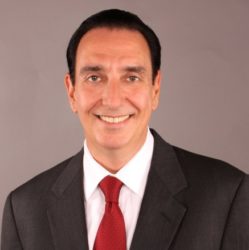Cybervision Mission
Version 2.0
Thursday, May 12th
1 pm
Planning solution for individuals with poor vision.
Cybervision Mission focus on scalable solution for individuals: children and adults with eye vision problems in the United States and around the world. Phase one is focused on using traditional eye glasses for the solution.
Special Missions performed within the structure as planned. Offers continuous unlimited Mission support capabilities. Executed with efficiency and expeditiously.
Missions can be co-directed and co-managed with philanthropist ensuring Mission milestones, accomplishments with measurable and quantifiable results. Continuous real-time data sharing including detailed financial information and In-kind asset utilization detailed information sharing.
Solutions elements:
Vehicle chassis proposed: Tesla Cybertruck, potentially enabling accessibility to unpaved road rural and remote locations.
Tesla Cybertruck rack (accessory), with customized add-on upper: roof & sidewalls canvas enclosure. Protection for equipment and support staff: humanoids, humans and patients.
SpaceX Starlink communication system, enabling satellite internet connection, rural and remote location globally.
Energy storage, supplying electricity to equipment.
Humanoids, robots and humans for staffing.
Eye examination utilizing technology app hardware and software
3D printers for glassware, potentially
Laser cutter for cutting glass lenses, possibly
Vision solution proposed by entrepreneurial visionaries.
Cyber vision vehicle’s
Planning to integrate currently manufactured and soon mass produced electric vehicle’s (Tesla Cybertruck) and other off-the-shelf equipment into mobile vision clinic. Some non-chassis or trailer vision assets considered.
Planning to manage to complete solution 100%
No plans for public, non-government organization (NGO) funding or other. Direct efficient solution eye exam to eyewear during one visit.
Completely funded by philanthropist and private donations, especially including in-kind donations (vehicles, equipment, etc.).
Volunteerism potentially for human staffing
Scalability
Vehicle Fleet, unlimited potential scalability currently planning between 100 and 1,000 cybervision mobile eye clinics.
Planning to operate the cybervision fleet 12 (sunrise to sunset) hours a day 7 days a week 365 days a year.
Estimating, complete eye care examination and prescription eyeglass fulfillment approximately every five (5) minutes.
Efficient process, patient enter the mobile clinic on one side receive digital eye exam information is relayed internally and externally to the cloud with automated I prescription with eye examination oversight digitally. Next step patient is ready for eyeglass frames the current with lens film (new technology) selected per corrective lenses prescription. Glasses laser cut to size of the frame. Patient is good with complete corrected glasses. Patient exists the clinic with corrected eyewear.
Potential formula:
12 hours per day (720 minutes)
7 days per week, 365 days per year (720 minutes x 365 day’s = 262,800 divided by 5 minutes per patient = 52,560 patient’s per vehicle per year
100 Cybervision vehicle’s = 52 million/year
1,000 Cybervision vehicle’s = 5.2 million/year
Formula represents potential maximum patients receiving vision services.
Budgeting
Cash assets in-kind dollar equivalent is about $80,000 per mobile cybervision clinic
Cost per patient servered
Estimate cost per patient served very approximated because of many unknown accuracies.
Detailed information including barcode and QR code is printed on label included in class storage case for potential reordering, etc.
Conceptual clinical mobile electric vehicle with potentially trailers plan for vision is adaptable for other many other missions.
Augmented reality (AR) eyeglasses
Future possibilities included calling similar process for augmented reality (AR) including vocational training and for
general education, entertainment and other purposes.
Geographical
The current plan is to begin in the United States focus on the 29 States Tesla vehicles are offered and fully supported. International playing to focus on countries and kingdoms that have electric vehicles.
Vehicle, Energy Storage & Humanoid’s charging
Infrastructure supporting the electric vehicles, on-board energy storage and Humanoid’s charging planned at central location (Hub-Spoke). Planning on utilizing portable clean energy solar farms for energy generation.
Security
Technology humanoids and humans planning for completely secure facility for assets and people. Potentially, some countries and other geographical locations globallbally and neighborhood’s domestically will not be acceptable locations for clinical services because of security concern.
Disclaimer
Information provided makes no representation that actually events will occur
Law enforcement and military
No plans to provide vision services to law enforcement or military. Individuals in law enforcement or military current retired will be supported and their family’s.
Forward-looking statements
Information provided contain significant amount of forward-looking statements
Open source
Information contained is not proprietary it is open source and can be used by anyone for any reason at any time.
Mission: Poor Vision solution
Background Information
Poor vision affects 4.2 billion people and while for many it can be corrected with lenses, glasses, or surgery, 2.5 billion people continue to live with uncorrected poor vision.
This has a detrimental effect on the individual and society as a whole as it can affect their ability to learn, earn, and participate in their community
Poor Vision — Largest Disability in the World
largest disability in the world: poor vision
Elon Musk
I am tackling the largest disability in the world: poor vision. It cannot be solved through donation alone. It requires expertise, teamwork, risk, and it’s largely a matter of trial and error.”
What is the app that simulates visual impairment?
There are an estimated 28 million blind and low-vision people in the United States alone, ranging from lack of central vision to complete blindness. The app simulates the most common eye diseases by using the camera and overlaying filters
